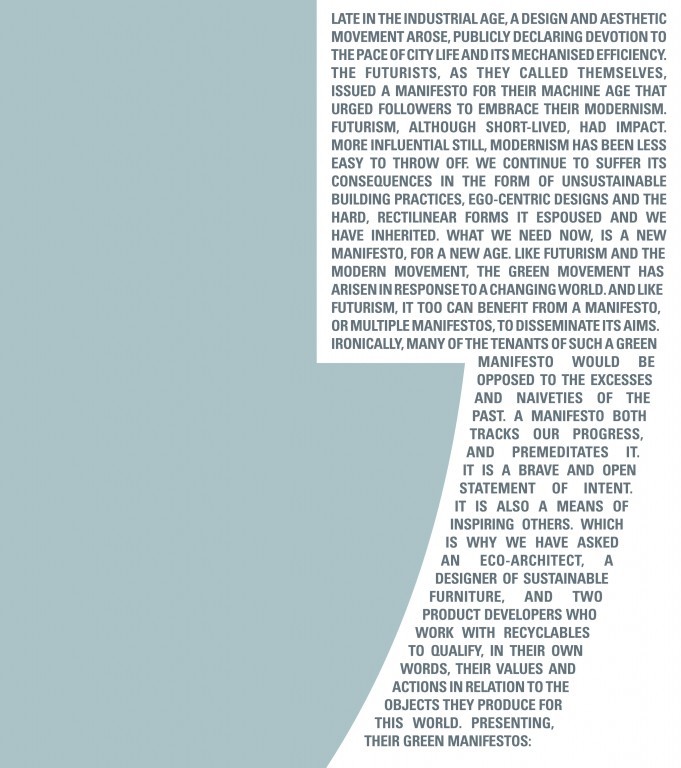First Published in

Late in the industrial age, a design and aesthetic movement arose, publicly declaring devotion to the pace of city life and its mechanised efficiency. The Futurists, as they called themselves, issued a manifesto for their Machine Age that urged followers to embrace their Modernism. Futurism, although short-lived, had impact. More influential still, Modernism has been less easy to throw off.
We continue to suffer its consequences in the form of unsustainable building practices, ego-centric designs and the hard, rectilinear forms it espoused and we have inherited. What we need now, is a new manifesto, for a new age. Like Futurism and the Modern Movement, the Green Movement has arisen in response to a changing world. And like Futurism, it too can benefit from a manifesto, or multiple manifestos, to disseminate its aims.
Ironically, many of the tenants of such a Green Manifesto would be opposed to the excesses and naiveties of the past. A manifesto both tracks our progress, and premeditates it. It is a brave and open statement of intent. It is also a means of inspiring others. Which is why we have asked an eco-architect, a designer of sustainable furniture, and two product developers who work with recyclables to qualify, in their own words, their values and actions in relation to the objects they produce for this world.









